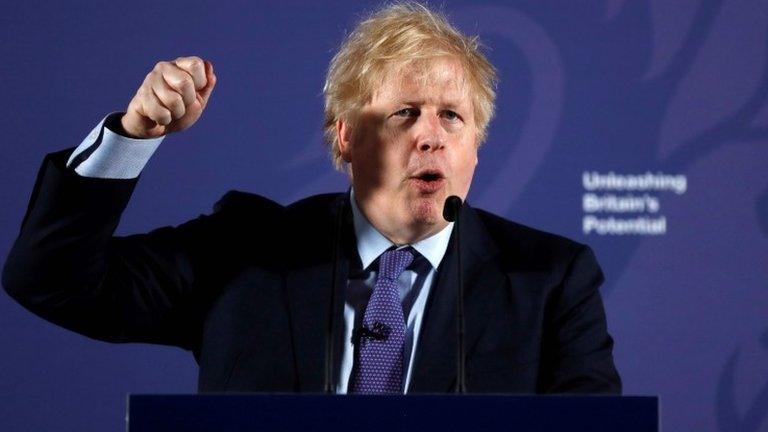What is a 'Canada-style' trade deal?
- Published
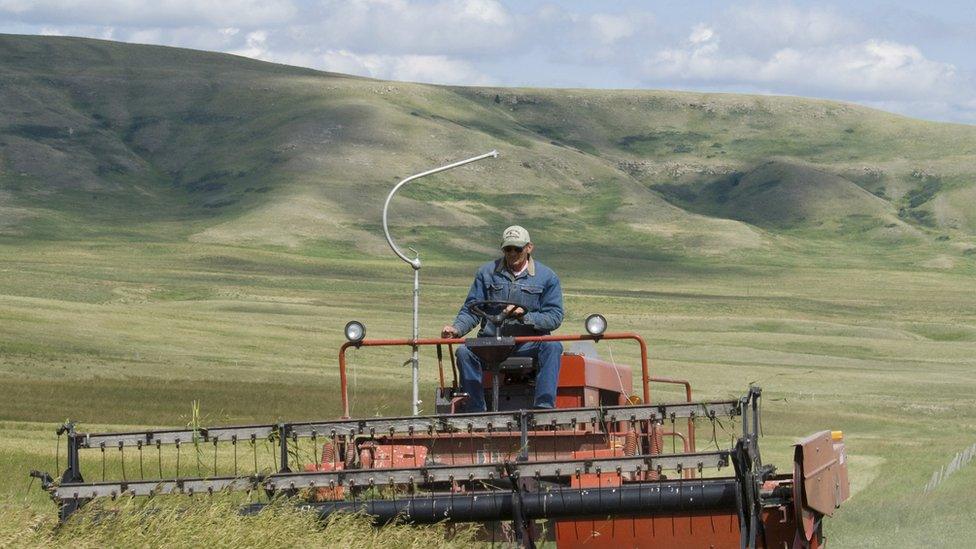
Harvesting Canadian oats, which used to attract a 54% tariff in Europe
Prime Minister Boris Johnson has said when it comes to trade with the EU after Brexit: "We want a comprehensive free trade agreement, similar to Canada's".
The EU's agreement with Canada is called the Comprehensive Economic and Trade Agreement, or Ceta for short.
The EU began negotiating with Canada in 2009, and Ceta provisionally came into force in 2017, although it has not yet been signed off by all the EU member states.
What does Ceta do?
We've heard a lot about wanting a "zero-tariff, zero-quota" deal between the UK and the EU. Ceta does not do that.
Ceta gets rid of most, but not all, tariffs (that's taxes on imports) on goods traded between the EU and Canada. Tariffs remain on poultry, meat and eggs.
It also increases quotas (that's the amount of a product that can be exported without extra charges) but does not get rid of them altogether. For example, quotas on EU cheese exports to Canada increase from 18,500 tonnes to 31,972 tonnes a year.
It does little for the trade in services and in particular almost nothing for the trade in financial services, which is very important for the UK economy.
Confused by Brexit jargon? Reality Check unpacks the basics.
It also does not remove border checks, so there is still a possibility that goods have to be examined at ports to make sure they meet regulatory requirements, and their paperwork is in order.
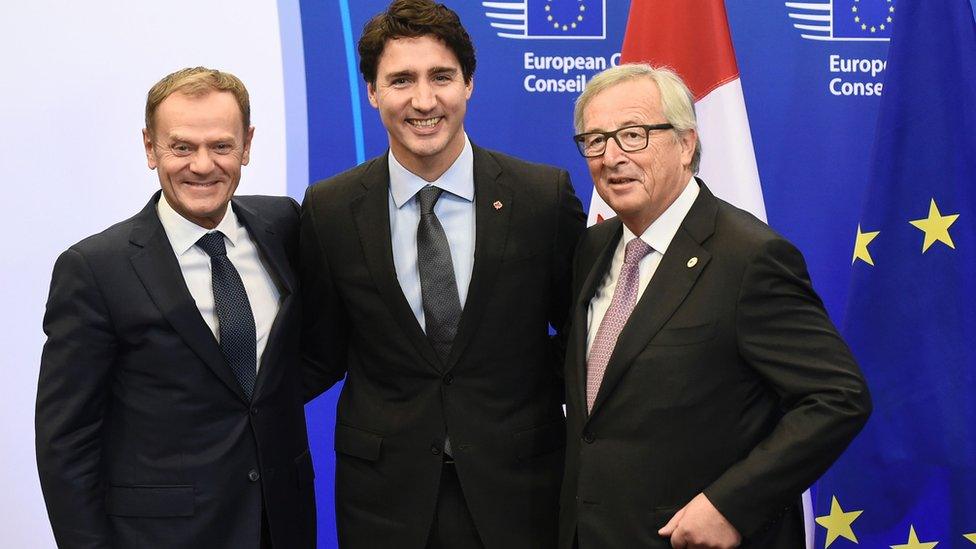
European Council President Donald Tusk, Canadian Prime Minister Justin Trudeau and European Commission President Jean-Claude Juncker at the CETA summit in October 2016
What does it say about standards?
Ceta protects EU "geographical indications", meaning for example that you can only make Parma ham in Italy and camembert cheese in France, and Canada can't import something that calls itself camembert from any other country.
They have also agreed to open up government contracts to each other, so Canadian companies could bid to build French railways, for example.
There is also co-operation between the two countries on standards, so a piece of equipment made in an EU country can go through all its safety and quality checks there, without needing to have them repeated in Canada - and vice versa.
Ceta also allows professional qualifications to be recognised both in Canada and the EU, making it easier, for example, for architects or accountants to work in both places.
And it aligns Canadian rules in some areas of copyright and patents with those of the EU.
Is the UK's trade with the EU like Canada's?
Countries that are closer to each other tend to trade more, especially in goods, and this is the case with the UK and the EU.
The UK exported £291bn of goods and services to other EU countries in 2018, which was 45% of all UK exports.
It imported £357bn of goods and services from the EU, which was 53% of all UK imports.
On the other hand, Canada exported, external 46.2bn Canadian dollars (£26.7bn) of goods and services to the EU in 2017, which was 7.9% of its exports.
It imported 63.6bn Canadian dollars of goods and services to the EU, which was 10.5% of its imports.
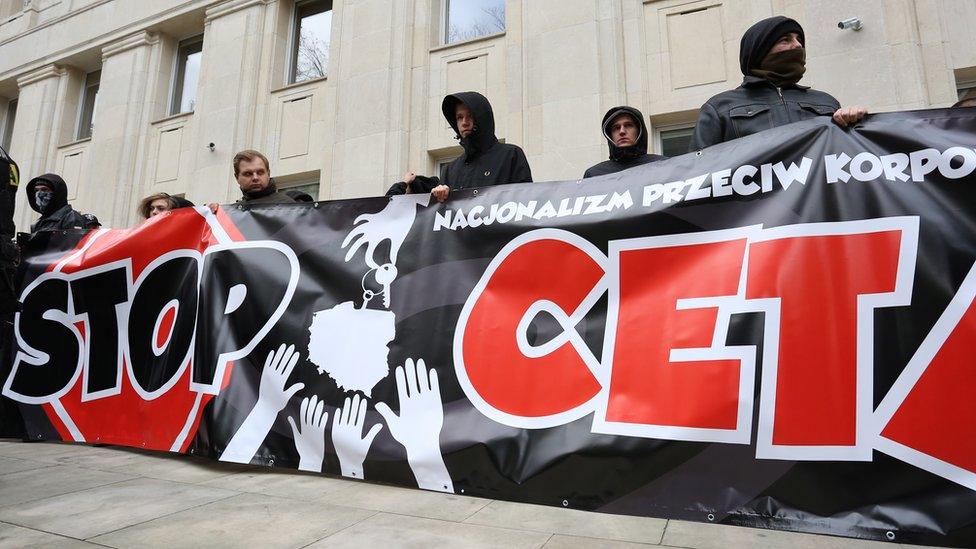
Ceta faced tough opposition over its environmental and civil liberties provisions
What is an Australian-style deal?
The prime minister also mentioned having an arrangement with the EU similar to Australia's.
The EU does not have a free trade deal with Australia. They are in negotiations for one, but they currently operate mainly on World Trade Organisation (WTO) rules.
There was an EU-Australia Partnership Framework agreed in 2008, which reduces barriers to trade, but was not a free trade agreement.
So, trading on a similar basis to Australia would be largely the same as trading under WTO rules. In other words, it's another way of saying the UK would leave with no trade deal in place.



- Published26 January 2024
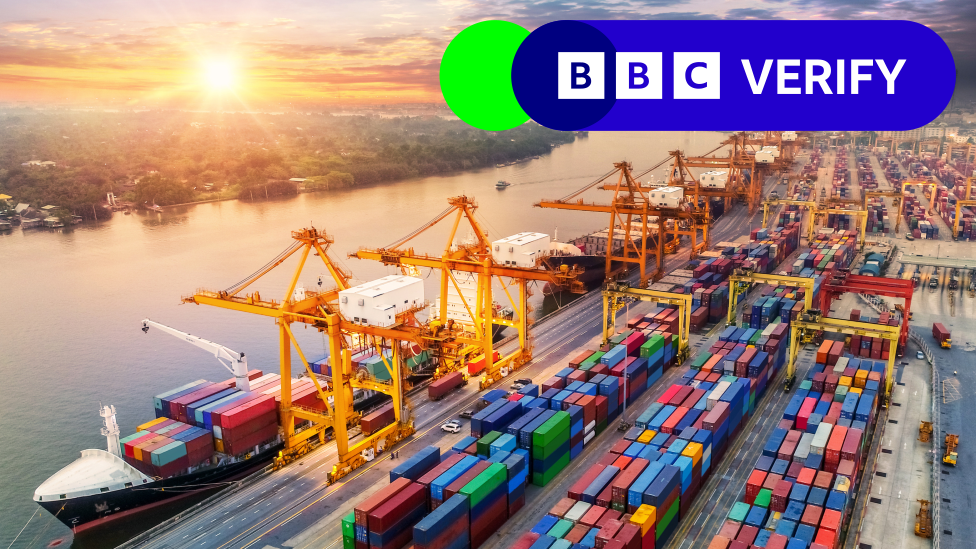
- Published3 February 2020
